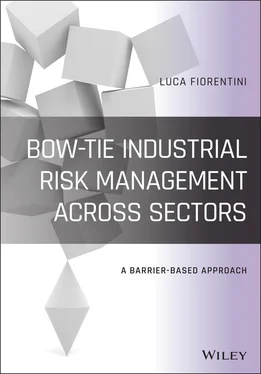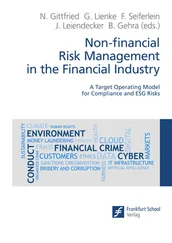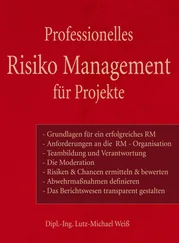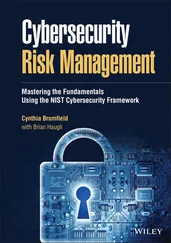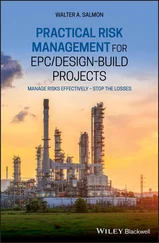
Figure 3 The epistemological meaning of security.
As can be seen in Figure 3, to be “safe,” from the Latin securum [se (sine) + cure], means to be in a state without breathlessness, without worry. This is what must be guaranteed to the users of a building or activity in daily use.
This means that the safety of a building or activity lives in Kairos and not in Kronos, i.e. in the time for which it is designed, the “appropriate” time for which it is made, during which people’s attention must be focused on what they have to do, certain that their safety is guaranteed if they respect simple ordinary ways of use.
The complexity of fire safety in construction means that the majority of designers see it as a specialization.
The emergence in the design of unusual technical‐scientific problems, the complex problems related to the construction phase of the Opera, with the need to collect documentation and certifications during the project, the need to guarantee the expected performance of the protection measures over time (with reference to a service life of at least 50 years), and the economic value of these problems require analysis and study of unusual topics and problems.
For constructions of the past, for which safety in everyday use was a modest concern (it was considered sufficient to have a roof over one’s head) and design methods were simple and inaccurate, even the incorrect and approximate definitions of safety were sufficient.
For today’s sophisticated constructions rich in systems, where the theory of statics is replaced by theories of dynamics, where the description of fire as temperature is replaced by fluid dynamics models, and where the behaviour of materials is described by entropic theories, it is necessary to “chase” and better define the meaning of safety .
The correct measurement of safety through risk analysis is one of these issues.
Safety science is the discipline that studies risk in its various forms, direct and indirect, with the aim of reducing it to the minimum possible and controlling its consequences.
We speak of “reduction” of risk because, obviously, its complete elimination is mathematically impossible both because the risk variables are infinite and imponderable, and because zero risk is a theoretical limit that cannot be reached, the same as absolute zero for temperature.
As you know, the safety cycle is based on three parameters:
1 Risk analysis
2 The choice of prevention and protection measures
3 Security management
A correct and complete analysis is therefore the basis of the design.
In accordance with the RAMS (Reliability, Availability, Maintainability, and Safety) definitions proposed by the IEC 61508 standard, today we therefore define safety as the condition of a system characterized by a tolerable accident risk.
This volume is about the Bow‐Tie method which, although very old, is still one of the most widespread methods for risk analysis and is well suited to approach risk analysis and management in a structured way and with a strong communicative impact because of its immediacy and because it is simpler than the combination of fault tree and event tree analyses, especially for non‐experts and stakeholders in general.
The Bow‐Tie is a risk analysis tool with a characteristic “bow tie” shape. The diagrams consist of a fault tree connected to an event tree. The junction point, the centre of the bow tie, represents the critical event under examination.
This method can also be used quantitatively and therefore validly used both in the world of industrial risk and for a more in‐depth conventional fire risk assessment than possible with qualitative methods, such as those of the Fire Prevention Code or Legislative Decree 81.
This volume shows how you can easily set the basis for a more structured reasoning, regardless of the field of application. In every field of technology, risk has causes, consequences, and control measures (preventive and mitigative), which are generally referred to as “barriers” (the Swiss cheese slices from Reason).
The operation or non‐operation of control measures affects the level of risk over time and the non‐operation (or failure of a barrier) is in turn a function of a number of aspects: maintenance, information, training, calibration, and so forth. This allows the use of the paradigm to also support the management system.
By analyzing data relating to negative episodes (accidents, if we are talking about safety) it is possible to understand what the failed barriers are, how they link together, and, therefore, the causes of failure, facilitating the analysis of the root causes.
This approach can also be extended to ordinary fire prevention.
The application of this technique makes it possible to analyze a pool of fire scenarios considered representative and sufficiently exhaustive of fire safety risks. Each scenario can be characterized both in probabilistic terms and in terms of dynamics and potential direct and secondary effects (domino effect) on safety.
Starting from the description of the building under assessment, the procedure identifies and characterises the most representative fire scenarios both in terms of causes and effects (the two wings of the bow tie) and then guides the definition of the fire prevention strategy, as it highlights the most critical technical systems identified in the design phase.
In fact, the analysis with the Bow‐Tie method (supplemented by a quantitative assessment for the definition of independent protection levels and for the estimation of the probability of failure) can integrate the risk assessment according to the flow referred to in Section G of the Ministerial Decree of 3 August 2015.
Damiano Tranquilli
HSE Manager, Grandi Stazioni Rail S.p.A., Ferrovie dello Stato
In our everyday experience, each of us faces choices and decisions and implements actions that are carried out in direct interpersonal relationships or more widely in the context of our social relations.
They may be instinctive or almost‐instinctive choices, due to experience or volition or because, perhaps based on the limited scope of the effects, we believe that we can achieve them regardless of the consequences.
They can be the object of longer meditation because they are considered important or directing with respect to our personal sphere or in the economy of our relationships and because according to our way of being, perhaps also because of the conditioning of experience and training, we can be more or less inclined to reflect on our actions.
Even if with different intensity and purpose, in retrospect, we often find ourselves reconsidering choices, decisions, and actions that we are going to rethink for mere attitudinal inclination or for having to manage effects and consequences not initially foreseen.
In the same way we collect our experiences and, even if in the perspective of the different individualities of each one, we consolidate a meaning that informs our further choices, in the orientation of the decisions or in the ways of their implementation, even if only to “not do it again”!
In other words, we can say that risk management goes naturally alongside the complexity of our actions, taking shape and consistency according to our individuality.
We may be more inclined to analyze and weigh choices in a preventive manner or be more instinctive and strong‐willed in acting, and perhaps more skilful in correcting our actions in progress.
Читать дальше
